Building of the Day: 105 Franklin Avenue
Brooklyn, one building at a time. Name: Wood-frame house Address: 105 Franklin Avenue Cross Streets: Park and Myrtle avenues Neighborhood: Bedford Stuyvesant Year Built: Before 1871 Architectural Style: Italianate Architect: Unknown Landmarked: No The story: This house is hiding in plain sight, a survivor from when this part of town was a thriving middle and…
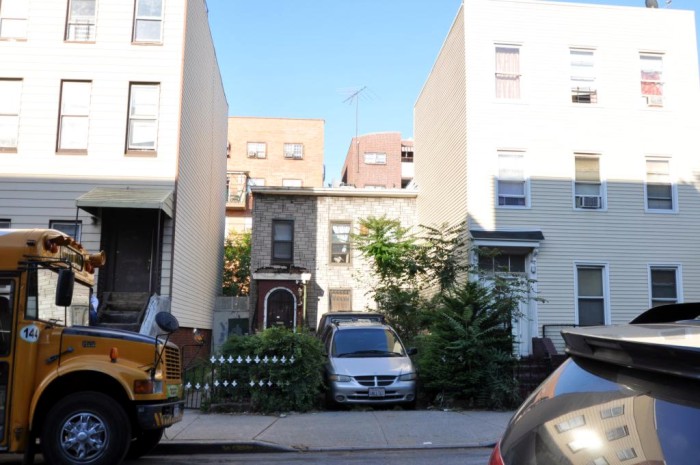

Brooklyn, one building at a time.
Name: Wood-frame house
Address: 105 Franklin Avenue
Cross Streets: Park and Myrtle avenues
Neighborhood: Bedford Stuyvesant
Year Built: Before 1871
Architectural Style: Italianate
Architect: Unknown
Landmarked: No
The story: This house is hiding in plain sight, a survivor from when this part of town was a thriving middle and working class residential neighborhood. The growth of the area came from two sources; the spread of people moving south from Williamsburg, and the growth of Bedford and the Wallabout districts. By the 1870s, Franklin and its adjacent streets were home to mostly wood-framed houses. The industry that moved into this area came later. Old maps show many more houses of worship than the ones that still survive civic clubs and other types of buildings that come with any gathering of people that coalesce into a viable neighborhood. But even back then, this one was a bit different.
First of all, it’s always sat back in the lot. It’s not part of a long vanished row of houses, but predates them. The house shares characteristics of similar homes in Wallabout, Fort Greene, Boerum Hill and Brooklyn Heights. Unfortunately, the original trim that would have helped date the house is long gone, and the house is covered in vinyl or asbestos tile. But there are still some clues left. The shape and pitch of the roof (seen in shadow on the 80s tax photo) is consistent with wood-framed homes dating from the 1850s. The size and placement of the windows as well.
Many houses from this period of the 1850s to early 1860s also have this distinctive entryway to the back of the house by means of a gated and fenced-in pathway. Later houses tend to fill the lot. The remains of the wrought iron fencing in front of the property look more like the 1870s, but who said someone then could not buy a new fence?
So who lived here? According to the papers, in 1871, the house had been home to a very unhappy couple; William and Emma Davis. He was a wife beater. Considering most women did not make such claims public back then, he must have really been awful. He was the owner of a bell foundry in Williamsburg. She took him to court, not only for beating her, but for not providing her with money to buy clothing or food for her and their three children. The husband denied it, but after listening to witnesses, including the children, the judge was convinced that she was telling the truth. Emma Davis was granted a divorce and William was ordered to pay child support and alimony.
The house was sold to Edward C. Beattie. He was a clothing and dry goods dealer. When he died at the age of 91 in 1900, he was the oldest resident of the 7th Ward. Mr. Beattie had been born in New Dorp, Staten Island, and was a descendent of one of Staten Island’s first Dutch families. He had grown up on a farm there, as a boy playing with his next door neighbor, young Cornelius Vanderbilt.
The papers said that Mr. Beattie had been Republican since the party had been founded, and had voted straight ticket Republican ever since reaching his majority. Even at 90, he was a familiar sight in the neighborhood, walking everywhere, alert and strong. The paper said that he was one of the most beloved people in the 7th Ward, and would be sorely missed. He was buried at the Moravian Cemetery on Staten Island, which took up part of family farm. At the time, the farmhouse, over 180 years old, was still standing.
The house does not appear in the news again. Amazingly, it survived all these years, ducking being torn down for new infill housing, a factory, or even a garage. Today, this 1260 square foot house is a legal two family. In taking a look at the various photographs of the house, it’s interesting to see the changing cars in the front yard. Car styles change, but the joy of a driveway lasts forever. Even though the house has been very much altered over the years, and the front yard long turned into a driveway, I hope this house survives for a long time.
(2012 Photo: Christopher Bride for PropertyShark)
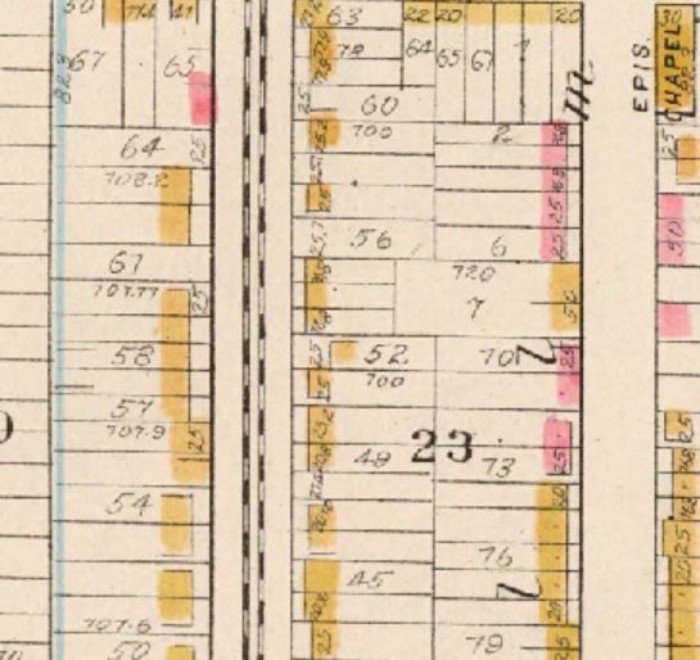
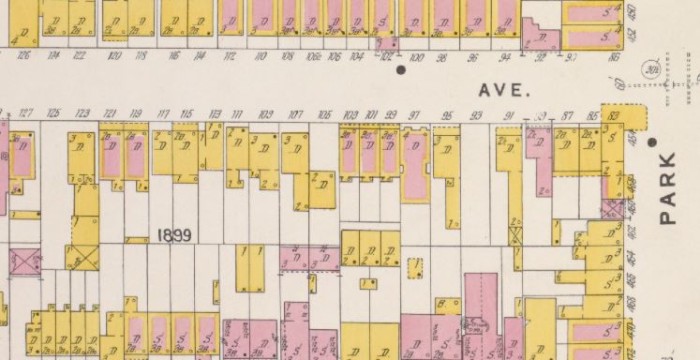
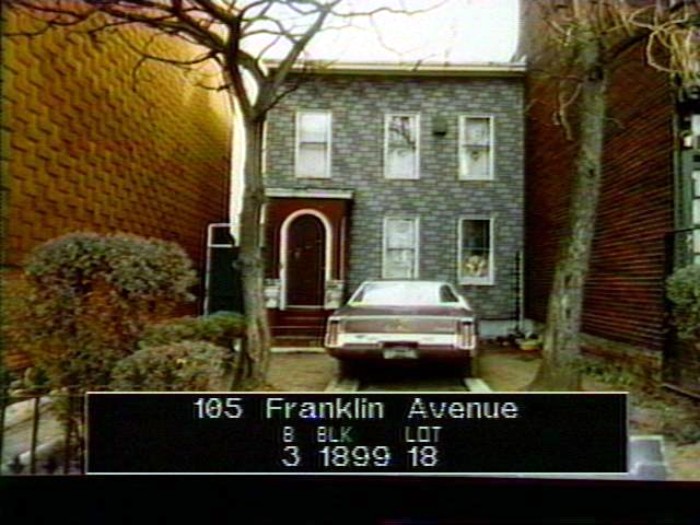
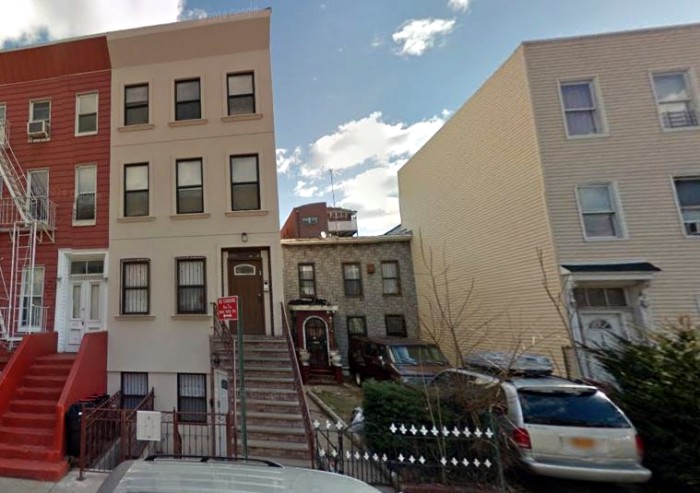
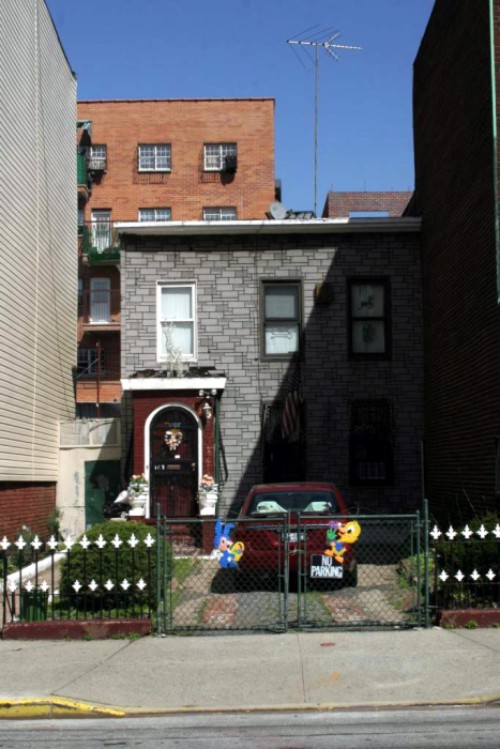





I used to have a place on Ryerson between Myrtle and Park. That place and many of the other houses on the block were said to have been constructed in the 1840’s and 1850’s. The place across the street was built by Walt Whitman’s mother and he lived on the block as a young man.